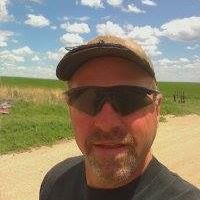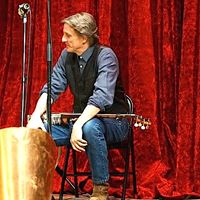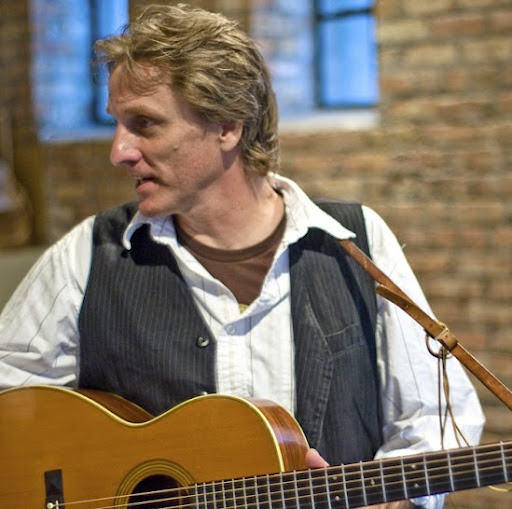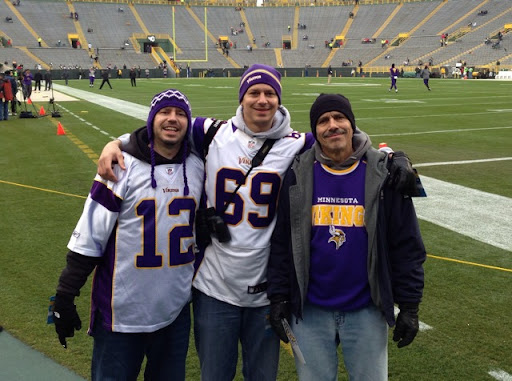Mark Daniel Dvorak
age ~60
from Waseca, MN
- Also known as:
-
- Mark D Dvorak
- Mark J Dvorak
Mark Dvorak Phones & Addresses
- Waseca, MN
- Iowa City, IA
- Dallas, TX
- Alexandria, VA
Us Patents
-
Random Pulse Generator
view source -
US Patent:6522210, Feb 18, 2003
-
Filed:Feb 16, 2000
-
Appl. No.:09/505274
-
Inventors:Mark Daniel Dvorak - Waseca MN
Paul Eugene Bauhahn - Fridley MN -
Assignee:Honeywell International Inc. - Morristown NJ
-
International Classification:H03B 2900
-
US Classification:331 78, 331 46, 331 47, 708250, 708251
-
Abstract:Random pulse generators and generating systems using at least three oscillators. The output signals of at least two of the oscillators are combined to disturb the output signal of a final oscillator. For one configuration, combined output signals of at least two phase shift oscillators are used to modify the feedback signal of a final phase shift oscillator, thus disturbing the output signal of the final oscillator. For another configuration, the output signals of at least two phase shift oscillators are used to drive a subtractor whose output signal is combined with the output signal of a final phase shift oscillator to drive a subsequent subtractor, thus disturbing the output signal of the final oscillator.
-
Ultra-Wideband Impulse Generation And Modulation Circuit
view source -
US Patent:6911874, Jun 28, 2005
-
Filed:Feb 4, 2002
-
Appl. No.:10/067025
-
Inventors:Mark Daniel Dvorak - Waseca MN, US
-
Assignee:Honeywell International Inc. - Morristown NJ
-
International Classification:H03K007/04
-
US Classification:332112, 375239
-
Abstract:A modulated ultra wideband pulse generation system is provided. The system comprises a pulse waveform generator circuit operable to generate an on-off pulse waveform, and a modulating circuit operable to receive a modulating signal and to modulate the on-off pulse waveform in response to the modulating signal. Further embodiments of the invention comprise a variable bandwidth circuit operable to alter the bandwidth of the pulses comprising the on-off pulse waveform. Various embodiments of the invention comprise on-off keying modulation, pulse position modulation, and pulse phase modulation.
-
Multi-Band Voltage Controlled Oscillator
view source -
US Patent:6930561, Aug 16, 2005
-
Filed:Sep 24, 2002
-
Appl. No.:10/253155
-
Inventors:Mark D. Dvorak - Waseca MN, US
-
Assignee:Honeywell International, Inc. - Morristown NY
-
International Classification:H03B027/00
-
US Classification:331 49, 331 46, 331179, 331117 FE, 331 74
-
Abstract:A single integrated chip has first and second voltage controlled oscillators and first and second buffers. The first voltage controlled oscillator has a first output defined by a first frequency band, and the second voltage controlled oscillator has a second output defined by a second frequency band. The first and second buffers selectively couple the first and second outputs to a common output. The first buffer is coupled between the first frequency controlled oscillator and the common output, and the second buffer is coupled between the second frequency controlled oscillator and the common output. The first buffer has a high output impedance when the second buffer couples the second output to the common output, and the second buffer has a high output impedance when the first buffer couples the first output to the common output.
-
Operational Amplifier With Selectable Performance Characteristics
view source -
US Patent:7030690, Apr 18, 2006
-
Filed:Feb 12, 2004
-
Appl. No.:10/777323
-
Inventors:Mark D. Dvorak - Waseca MN, US
-
Assignee:Honeywell International, Inc. - Minneapolis MN
-
International Classification:H03F 1/14
-
US Classification:330 51, 330 9, 330122, 330255, 330310, 330311
-
Abstract:An operational amplifier with selectable performance characteristics is provided. The operational amplifier provides a sleep mode (e. g. , fully disabled) in addition to providing a number of different levels of awake operation (e. g. , different performance characteristics). As such, the op-amp can allow a system to use only the power needed to obtain a required level of performance at any point in time. For example, the op-amp may be operated at a minimum power mode, an awake at mid-level power mode, or an awake at maximum power mode.
-
Wide Dynamic Range Operational Amplifier
view source -
US Patent:7193448, Mar 20, 2007
-
Filed:Jul 9, 2002
-
Appl. No.:10/191173
-
Inventors:Mark D. Dvorak - Waseca MN, US
-
Assignee:Honeywell International, Inc. - Morristown NJ
-
International Classification:H03K 5/22
-
US Classification:327 66, 327 65, 327560, 330257, 330261
-
Abstract:An operational amplifier has a bias circuit, a differential amplifier, an output stage, and a feed forward circuit. The bias circuit provides a reference. The differential amplifier is coupled to a pair of input terminals and provides a differential output based on the first and second inputs. The output stage responds to the reference and to the differential output so as to supply a current to an output terminal. The feed forward circuit responds to the differential output in order to increase and decrease current to the output terminal. As a result, the feed forward circuit extends the dynamic range of the operational amplifier.
-
Differential Charge Pump With Open Loop Common Mode
view source -
US Patent:7514972, Apr 7, 2009
-
Filed:Jan 27, 2006
-
Appl. No.:11/342106
-
Inventors:Mark D. Dvorak - Waseca MN, US
James G. Hiller - Minnetonka MN, US
James D. Seefeldt - Eden Prairie MN, US -
Assignee:Honeywell International, Inc. - Morristown NJ
-
International Classification:H03L 7/06
-
US Classification:327157, 327108
-
Abstract:A differential charge pump with common mode and active regulators is presented. Either type of regulator may be used to improve the performance characteristics of the differential charge pump. The active regulator increases the output range of the differential amplifier. The common mode regulator establishes the common mode voltage of the differential charge pump. The common mode voltage is established independently from external circuitry and does not use a feedback path. The common mode regulator may also be used to establish a mid-rail voltage, which may be used to further improve the output range of the differential amplifier.
-
Bandwidth Management System For A Remote Repeater Network
view source -
US Patent:59913096, Nov 23, 1999
-
Filed:Apr 12, 1996
-
Appl. No.:8/628981
-
Inventors:Dana J. Jensen - Lynchburg VA
Steven J. Pfiefer - Owatonna MN
James K. Lyon - Waseca MN
Mark D. Dvorak - Waseca MN -
Assignee:E.F. Johnson Company - Burnsville MN
-
International Classification:H04J 110
H04J 102
H04B 714
H04B 715 -
US Classification:370492
-
Abstract:A bandwidth management system for a remote repeater network for modifying a first signal to create a second signal within the bandwidth of a communications link, transferring the second signal across the communications link, and reconstructing the first signal at the remote end of the communications link. The bandwidth management system featuring several mixing modes for performing the signal conversion and reconstruction. The system offering a calibration feature to correct for phase distortions introduced in reconstruction of the original signal. The calibration feature incorporating signals from a global positioning satellite system for reconstruction.
-
Narrowband Based Navigation Scheme
view source -
US Patent:63009048, Oct 9, 2001
-
Filed:Jun 9, 1999
-
Appl. No.:9/328472
-
Inventors:Mark D. Dvorak - Waseca MN
Jeffrey J. Kriz - Eden Prairie MN
Brian W. Schipper - Brooklyn Park MN -
Assignee:Honeywell International Inc. - Morristown NJ
-
International Classification:G01S 302
-
US Classification:342457
-
Abstract:Multiple pulses of narrow band signals of varying frequency are detected by multiple spaced apart receivers such that average time difference of arrivals of the signals from an item to be located are determined. The average time differences are used to calculate a position of the item to be located with a desired accuracy, such as within one meter in one embodiment. One of multiple receivers or rangers initiates a location process by transmitting a sync pulse. The sync pulse is received by a scout and other rangers. The scout is a small robot which acts as a transponder, sending out its own narrow band return pulse in response to the sync pulse. Each ranger then determines a difference in time between the sync pulse it receives and the return pulse generated by the scout. The location process is then repeated again at different selected narrow band frequencies, and an average of the difference in time at each ranger is determined. Each ranger is networked together via a standard wireless network, and also obtains position information via standard GPS methods.
Resumes

Mark Dvorak
view source
Mark Dvorak
view source
Mark Dvorak
view source
Mark Dvorak
view sourceName / Title
Company / Classification
Phones & Addresses
Director
The University of Texas at Arlington Alumni Association, Inc
841 W Mitchell St, Arlington, TX 76013
Principal
All Around Dj Sound
Electrical Contractor
Electrical Contractor
31047 221 Ave, Le Center, MN 56057
SUMMITS PEAK PROPERTIES LLC
Vehicle Records
-
Mark Dvorak
view source -
Address:34694 Valleyview Rd, Waseca, MN 56093
-
VIN:1FMFK20567LA39627
-
Make:FORD
-
Model:EXPEDITION EL
-
Year:2007
Classmates

Mark Dvorak
view sourceSchools:
Waltrip High School Houston TX 1968-1972
Community:
James Moody, Pearl Sweet, Drew Lozinski

Mark Dvorak
view sourceSchools:
Montclair Elementary School Denver CO 1968-1972
Community:
Brad Cowger, Amanda Butler, Laura Shelton, Karen Josephson

Mark Dvorak
view sourceSchools:
Ridgecrest Elementary School Largo FL 1976-1978, Largo Middle School Largo FL 1978-1981
Community:
Chris Allison, Richard Stephens

Mark Dvorak
view sourceSchools:
Orchard Park Public School Orillia Morocco 1995-1998
Community:
Bill Brunson, Scott Thornton, Cynthia Petherick

Mark Dvorak
view sourceSchools:
Greeley High School Greeley NE 1971-1975
Community:
Karen Wise, Roger Swanson, Robert Zahm, James Mlinar, Patty Nowak, Kay Atwater, Marty Callahan, Jane Curran, Dick Zahm, Dan Kurtenbach, Frances Finn

Mark Dvorak
view sourceSchools:
Potter High School Potter NE 1979-1983
Community:
Scott Stromer, Barry Schaeffer, Justin Gasseling, Dale Sheets, Bill Mcclure, Teresa Wintholz, Terry Frase, Stephanie Schaaf, Scott Grothe, Dena Brothers, Andrew Stromer, Cindy Stewart

Mark Dvorak
view sourceSchools:
Northwestern High School Mellette SD 1976-1980
Community:
Peggy Murray, Verlyn Steward, Lauri Phifer, Cheryl Robbins, Mary Mitchell, Rick Haessig, Luie Trudy, Floyd Sheridan, Valerie Peterson, Kathleen Jansen, M F

Mark Dvorak, Dickinson Hi...
view sourcePlaxo

Mark Dvorak
view sourceAtlanta, GA
Myspace

Mark Dvorak
view sourceYoutube
Flickr

Mark Dvorak
view source
Mark Dvorak
view source
Mark Dvorak
view source
Mark Dvorak
view source
Mark Dvorak
view source
Mark William Dvorak
view source
Mark Dvorak
view source
Mark Dvorak
view sourceGoogleplus

Mark Dvorak
Education:
University of Akron School of Law
Relationship:
In_a_relationship

Mark Dvorak

Mark Dvorak

Mark Dvorak

Mark Dvorak

Mark Dvorak

Mark Dvorak

Mark Dvorak
Get Report for Mark Daniel Dvorak from Waseca, MN, age ~60













